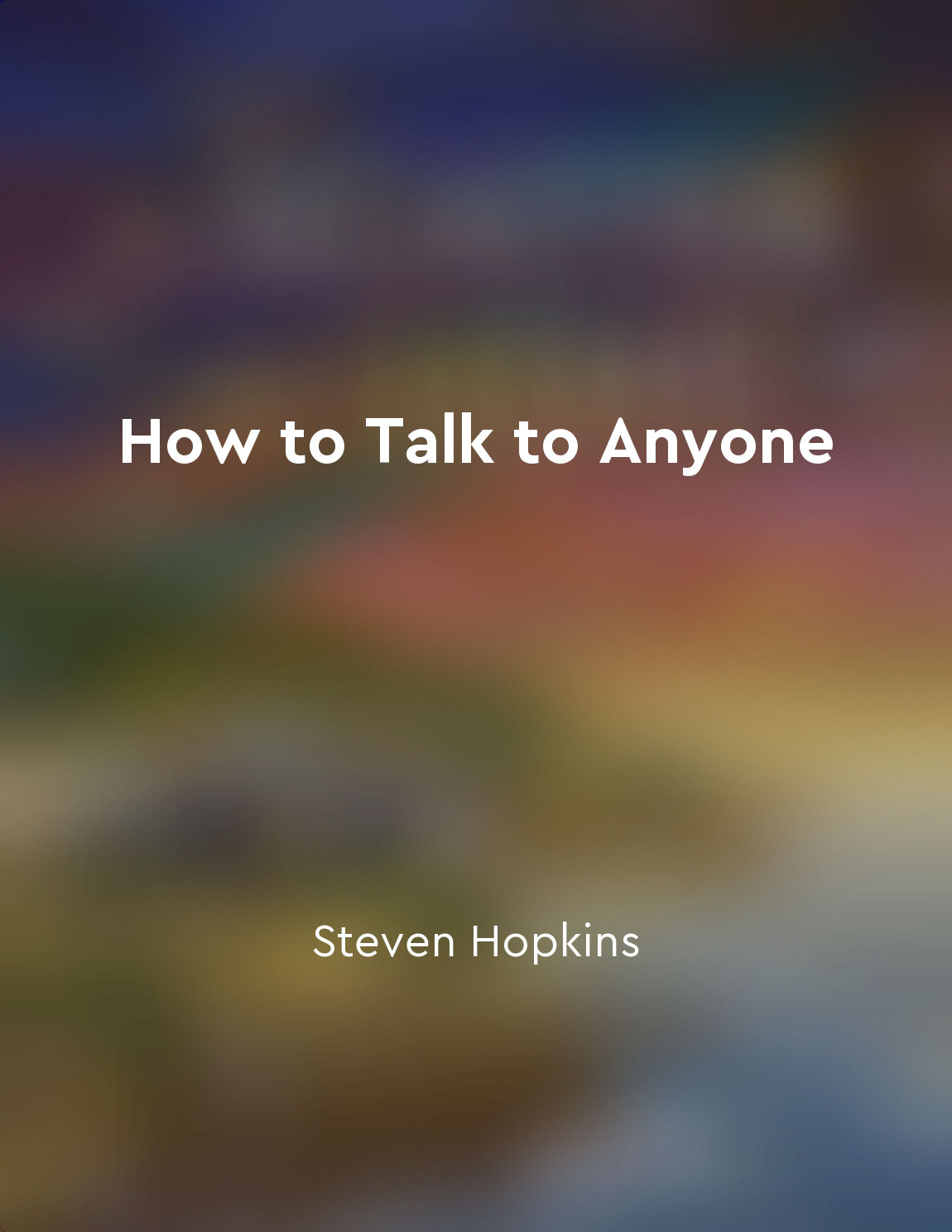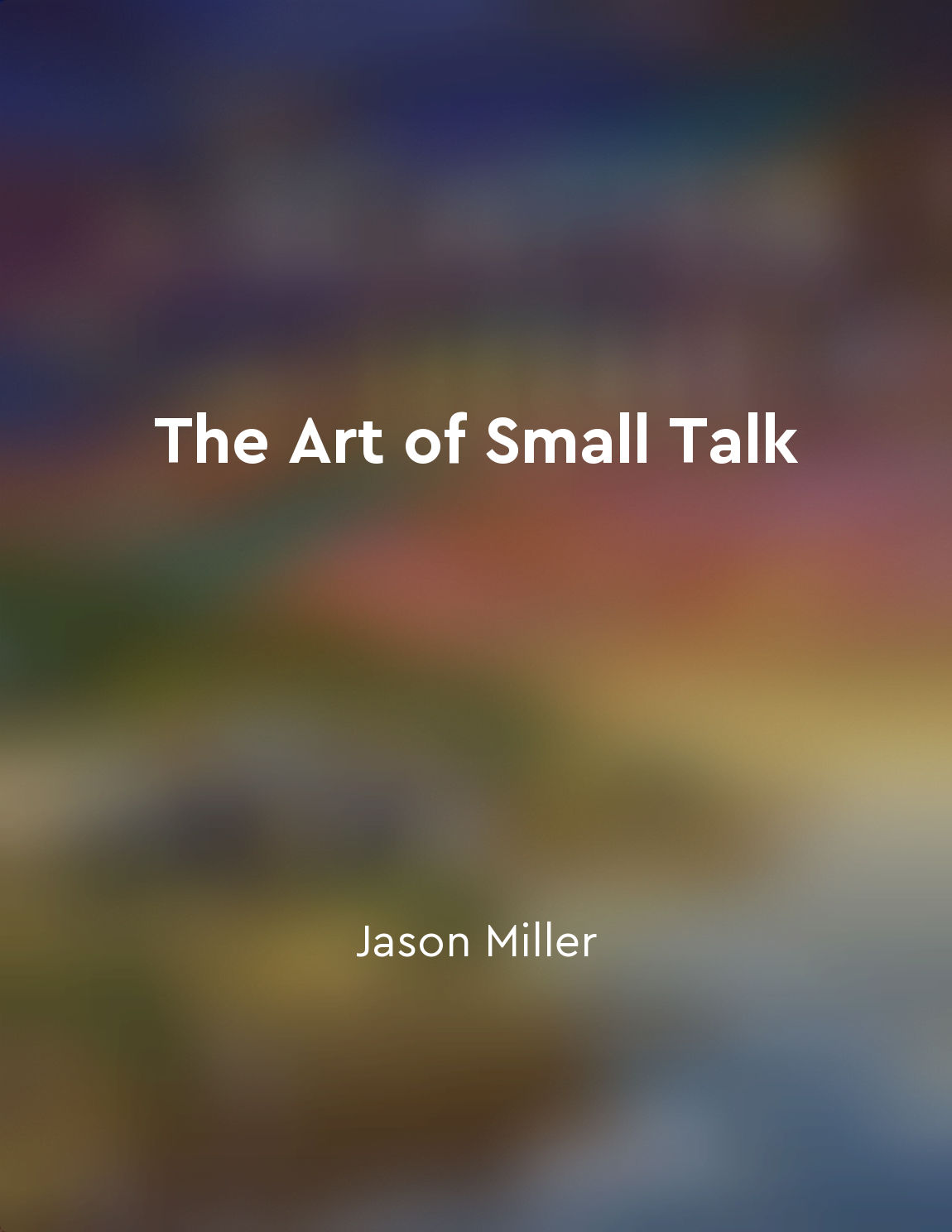Nonverbal cues conveyed through eye contact from "summary" of The Power of Eye Contact by Michael Ellsberg
Eye contact is a powerful form of nonverbal communication that can convey a wide range of emotions and intentions without saying a word. When we make eye contact with someone, we are signaling to them that we are engaged and present in the interaction. Our eyes can convey warmth, empathy, curiosity, or even tension and aggression. The way we use eye contact can influence how others perceive us and can impact the dynamics of a conversation or relationship. For example, maintaining eye contact while listening to someone can signal that we are attentive and interested in what they have to say. On the other hand, avoiding eye contact can suggest disinterest, discomfort, or even deceit. Furthermore, the duration and intensity of eye contact can also convey different messages. Prolonged eye contact can signal intimacy and connection, while fleeting glances may indicate shyness or nervousness. In some cultures, prolonged eye contact may be seen as a sign of disrespect or aggression, while in others it may be a sign of trust and honesty. In addition to the messages conveyed through eye contact, the pupils can also reveal a lot about a person's emotional state. Dilated pupils can indicate excitement or attraction, while constricted pupils may suggest fear or unease. Paying attention to these subtle cues can help us better understand others and improve our communication skills.- Eye contact is a powerful tool for nonverbal communication that can convey a wealth of information about our emotions, intentions, and attitudes. By being mindful of how we use eye contact and how we interpret the signals of others, we can enhance our relationships, improve our communication skills, and deepen our connections with others.
Similar Posts
The 7 principles are a guide to success
The 7 principles outlined in this book serve as a roadmap to achieving success in public speaking. By following these principle...

Know how to gracefully exit a conversation
Knowing how to gracefully exit a conversation is a crucial skill in any social interaction. Whether you're at a party, networki...
Use transitions to guide the audience
When Steve Jobs unveiled the first iPhone in 2007, he didn't just jump into a laundry list of features. Instead, he began by di...
Practice active listening by paraphrasing and summarizing the other person's points
To truly engage in a conversation with someone, it is essential to practice active listening. This means not only hearing what ...
Stay adaptable to different speaking situations and audience dynamics
To truly excel in the art of public speaking, one must be willing to remain flexible and open to the various speaking situation...

Dress to impress
When it comes to attracting women, one of the most important things to keep in mind is the way you present yourself. Your appea...

Use humor to break the ice
Break the tension with a good laugh - cracking a joke is a great way to lighten the mood and make people feel more comfortable....
Communication is essential for success
Communication is the bedrock of success. It is the foundation upon which all achievements are built. Without effective communic...

Practice small talk regularly to improve your social skills
Engaging in small talk on a regular basis is essential for honing your social skills. Just like any other skill, practice makes...
Charisma is a powerful tool for influencing others
Charisma is a powerful force that can greatly impact the way we influence and connect with others. It is not just about being c...

